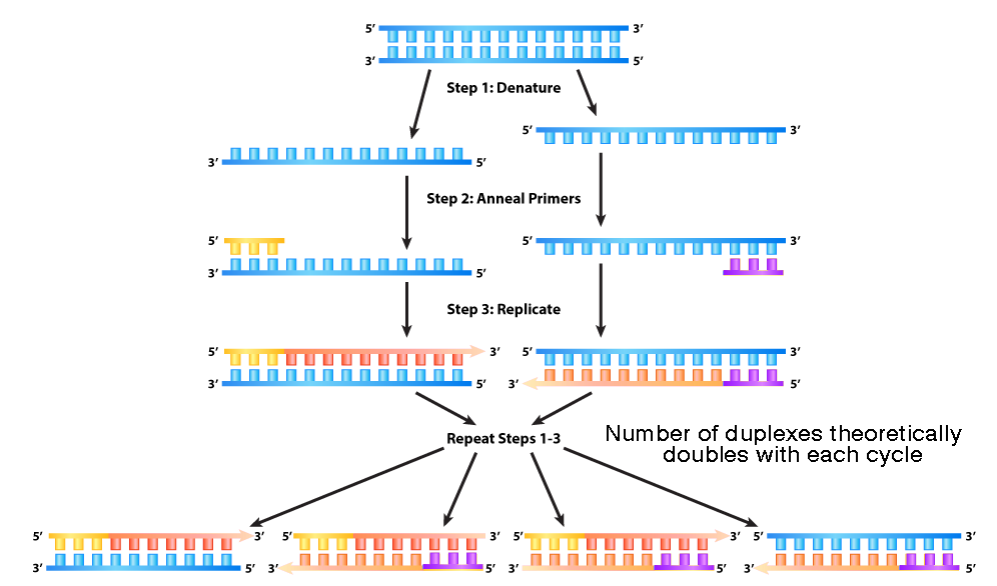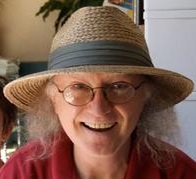9.13: Polymerase Chain Reaction
( \newcommand{\kernel}{\mathrm{null}\,}\)
PCR allows one to use the power of DNA replication to obtain large amounts of a specific DNA in a short time. As everyone knows, cell division results in doubling the number of cells with each round of division. Each time cells divide, DNA must be replicated, as well, so the amount of DNA is doubling as the cells are doubling. Kary Mullis recognized this fact and came up with the technique of PCR, which mimics DNA replication. In contrast to cellular DNA replication, which amplifies all of a cell’s DNA during a replication cycle, PCR is used to replicate only a specific segment of DNA. This segment of DNA, known as the target sequence, is replicated repeatedly, to obtain millions of copies of the target. Just as in DNA replication, PCR requires a template DNA, 4 dNTPs, primers to initiate DNA synthesis on each strand, and a DNA polymerase to synthesize the new DNA copies. In PCR, the primers bind to sequences .anking the target region that is to be amplified, and are present in large excess over the template. The DNA polymerase used is chosen to be heat stable, for reasons that will be clear shortly. The first step of each PCR cycle involves separating the strands of the template DNA so that it can be replicated. This is accomplished by heating the DNA to near boiling temperatures. In the next step of the cycle, the solution is cooled to a temperature that favors complementary DNA sequences finding each other. Since the primers are present in great excess over the template, they can readily find and base-pair with the complementary sequences in the template on either side of the target sequence. In the third step in the cycle, the DNA polymerase (which has not been denatured during the heat treatment because it is thermostable) extends the primer on each strand, making copies of both DNA strands and doubling the amount of the target sequence. The cycle is then repeated, usually about 30 times. At the end of the process, there is a theoretical yield of 2^30 more of the target DNA than there was in the beginning.



